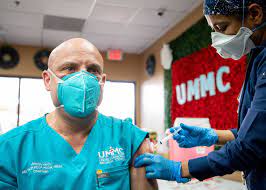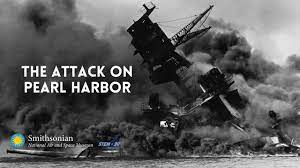The general trend that I’m seeing is, if you’re boosted and you get Covid, you really just at worst end up with bad cold symptoms. It’s not like before where you were coughing, couldn’t say sentences and were short of breath.
Further:Dr. Joseph Varon, chief of critical care services and the Covid-19 unit at Houston’s United Memorial Medical Center, said of the roughly 50 patients admitted to the hospital’s Covid unit in the last four weeks, 100 percent of them were unvaccinated.
REALLY, A SIMPLE SOLUTION: GET VACCINATED AND BOOSTED!
- There is a 90% chance that Hawaii and Maui could experience damaging levels of shaking during the next century.
- Honolulu was in the 50% to 75% range.
- There were two large earthquakes on the south flank of Mauna Loa in 1868 of up to 8.1 magnitude. There were 79 deaths from a tsunami and mudflow to the biggest one.
- The Kilauea south flank had a 7.2 earthquake in 1975.
- So looks like Honolulu should be relatively safe from any earthquakes in my few years to come.
- Let's look at a 20-ounce bottle of water, which costs around $1.50, or $9.60 per gallon.
- Drinking water costs 0.004/gallon in the U.S.
- Do the math, and bottled water costs 2400 times more than tap water.
- Well, I too made a calculation and found out that you can get from Amazon 40 bottles of 16.9 fluid ounce Kirkland Signature bottled water for $25.69. This turned out to be 5.3 gallons, or $4.77/gallon. Thus, compared to drinking water at $0.004/gallon, the factor is 1192. However, the Board of Water Supply here charges closer to $0.005/gallon, so, make that 954.
- The bottled water market jumped past $200 billion annually, half in the U.S.
- According to this article, everything counted, bottled water costs 2000 times more than drinking water from the tap, whatever that means.
- The plastic bottles eat up 17 million barrels of oil/year.
- Less than a quarter of those bottles get recycled.
- Spring water means it needs to originate underground.
- Glacier or mountain water can be anything.
- Bottle water may contain excess bacteria, benzene and arsenic.
- Filtered water means the water is run through a filter, any filter. Tap water is also filtered.
- Purified water does go through a more stringent process, but there is no regulation.
- Enhanced water adds something like vitamins.
- Alkaline water has a higher pH than tap water.
- 100% pure does not mean devoid of impurities.
- One advantage of tap water is that you don't need to buy it and lug it home, which can strain your back.
- Perhaps as early as May 6, or maybe it was November 20, 19,000 gallons of fuel spilled from a fire suppression drain line from the Red Hill storage site.
- Later it was announced that only 14 of the 20 tanks had fuel, and some of them had not been inspected for up to 40 years.
- On December 8 Secretary of Navy Carlos Del Toro ordered the suspension of operations at this location.
- But on December 20, James Balocki, deputy assistant secretary of the Navy, testified that this was not an emergency or crisis, and was unaware of people getting sick.
- On December 23 the Navy confirmed that more than 5,000 reported illnesses, 3.000 families were displaced and 93,000 were told not to drink the water.
- Can store up to 250 million gallons of fuel.
- Each of the tanks can store 12.5 million gallons.
- They are 100 feet in diameter and 250 in height.
- The facility began to be built in 1940.
- 3900 worked every day to build tunnels and space for 20 tanks.
- The facility was still under construction when Japan attacked on December 7, 1941.
- The site was used to bury the dead from the attack. Many were later identified and moved to the National Memorial Cemetery of the Pacific in Punchbowl, meaning that graves must still remain there.
- In December 2013 into 2014 27,000 gallons of jet fuel leaked from tank #5.
- The nearest drinking water shaft operated by the Navy was 3,000 feet away and provides water to military families.
- The Halawa shaft of the city is only one mile away.
- Groundwater showed 17 parts per billion contamination, well below the 100 parts per billion requirement.
- In December 2021 drinking water contamination was found after military families reported symptoms of nausea, diarrhea and intense headaches, foul-smelling tap water bearing an oily sheen.
Less than 8% of water used in the U.S. goes to the residential sector:
- 30% outdoor watering
- 19% toilets
- 15% washing machines
- 11% faucets (including showering)
- 10% leaks
- The average price of water in the USA costs $1.50/1000 gallons. I think this is too low. Maybe it includes ag water.
- So I went city by city across the USA and calculated costs from $0.003 to $0.014/gallon.
- Water in Honolulu costs around $5/1000 gallons, or $0.005/gallon.
- Desalination of seawater costs $1/cubic meter, or $0.004 cents/gallon.
- Desalination of brackish water costs $0.6/cubic meter, or $0.0022 cents/gallon.
- Transport costs a few cents/meter if only horizontally.
- A 100 meter vertical lift is about as costly as taking this water 100 km horizontally.
- In a worst case scenario, no one should die.
- In a short transition, a few will get ill, as has already occurred.
- Bottled water sales will rise.
- Honolulu will be tainted by reputation as a location with bad water, like Flint, Michigan.
- Waikiki might lose tourists, which will be a gain for other islands.
- Home values might be compromised, plus people will leave and fewer will come here to live.
- In short, not so serious.
- We'll learn to live at a slightly higher cost of living and forever be pissed off with the Navy.
- Still the best place on Planet Earth, while awaiting a possible serious hurricane, tsunami or earthquake, which has not been a problem in my 81 years here in on Oahu.
-


























Comments
Post a Comment